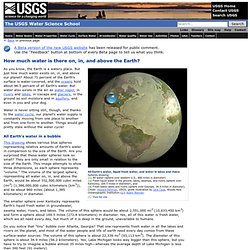

How a sense of sacred can help sustainable business. There is a saying from a famous Buddhist master that the miracle of life is not being able to walk on water but on being able to walk on the Earth.

This came to mind as I read an introduction by Prince Charles in What has nature ever done for us? , Tony Juniper's new book on the importance of natural capital. Prince Charles says that a key reason we are so wantonly destroying the natural world on which our very lives depend is that "there now abounds a disturbing lack of a sense of the sacred".
"This is very important," he writes. "If nothing is sacred, most of all nature, then we create the potential for the perfect kind of storm, to which it will be virtually impossible to adapt, let alone mitigate. " He hits the nail on the head; we are not going to save ourselves and countless species from destruction with innovations in technology and business thinking alone, unless we heal our profound disconnection with Mother Earth. Building bridges with nature Looking beyond material consumption. ‘UMD Finding May Hold Key to Gaia Theory of Earth as Living Organism’ How much water is there on Earth, from USGS Water Science for Schools water information site. A Beta version of the new USGS website has been released for public comment.Use the "Feedback" button at bottom of every Beta page to tell us what you think.

All Earth's water, liquid fresh water, and water in lakes and rivers View full size As you know, the Earth is a watery place. But just how much water exists on, in, and above our planet? About 71 percent of the Earth's surface is water-covered, and the oceans hold about 96.5 percent of all Earth's water. Water is never sitting still, though, and thanks to the water cycle, our planet's water supply is constantly moving from one place to another and from one form to another.
Call for Arctic geoengineering as soon as possible - environment - 12 December 2011. By Peter Aldhous It’s the most urgent call for geoengineering yet: begin cooling the Arctic by 2013 or face runaway global warming.

But the warning – from a voice on the scientific fringe – may be premature, according to experts contacted by New Scientist. John Nissen, a former software engineer who has become alarmed at the possibility of reaching a climate “tipping point” argued for Arctic geoengineering as soon as possible in a poster presentation at the American Geophysical Union meeting in San Francisco last week. “We’ve got to pull out all the stops to prevent a runaway situation,” Nissen says. He suggests using stratospheric aerosols to cool the surface and subsurface below, or increasing the reflectance of low-level clouds by pumping a fine spray of salt water into them.
Gas leak As the Arctic loses its shield of ice in the summer months, shallow waters over the east Siberian Arctic continental shelf will warm to several degrees above freezing. Ice-free when? Uncertainty analysis. New molecule could help cool planet. Lions Green Team. Human Planet: BBC Unravels the Secrets of Earth. By Maria Popova What rainforest tribes in the jungle have to do with reindeer swimmers in the Arctic.

What are the secrets of this amazing planet we call home, and what exactly is our place in it? This question has been tickling humanity’s curiosity in a profound way since time immemorial and, now, the BBC is making an unprecedented effort to answer it. Human Planet — an ambitious, jaw-dropping, exquisitely cinematic series exploring mankind’s rich and complex relationship with nature across the globe, out this week on DVD, Blu-ray and video-on-demand. Filmed on more than 80 locations across remote lands, underwater worlds and aerial heights, it covers everything from the first recorded footage of the world’s last uncontacted tribe in the Brazilian rainforest… It’s important for humanity these people exist. …to fox hunting with a golden eagle in Mongolia… …to extreme fishing at Victoria Falls…
Beautiful waterfall of West Virginia - Yahoo! News Photos. Offers $1 Million Reward to First to Make In Vitro Meat. Makes Me Think - MMT - Today's Thought-Provoking Life Stories. Future Timeline. Richter Scale" Whenever a major earthquake is in the news, you'll probably hear about its Richter scale rating.

You might also hear about its Mercalli Scale rating, though this isn't discussed as often. These two ratings describe the power of the earthquake from two different perspectives. The most common standard of measurement for an earthquake is the Richter scale, developed in 1935 by Charles F. Richter of the California Institute of Technology. The Richter scale is used to rate the magnitude of an earthquake -- the amount of energy it released.
The Richter scale is logarithmic, meaning that whole-number jumps indicate a tenfold increase. As we previously noted, most earthquakes are extremely small. Richter ratings only give you a rough idea of the actual impact of an earthquake, though. Richter scale ratings are determined soon after an earthquake, once scientists can compare the data from different seismograph stations.